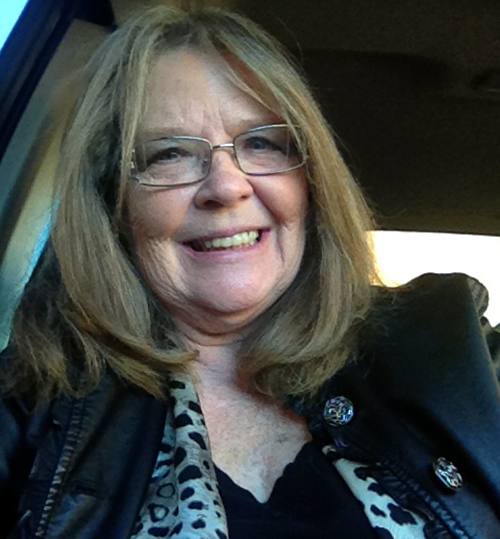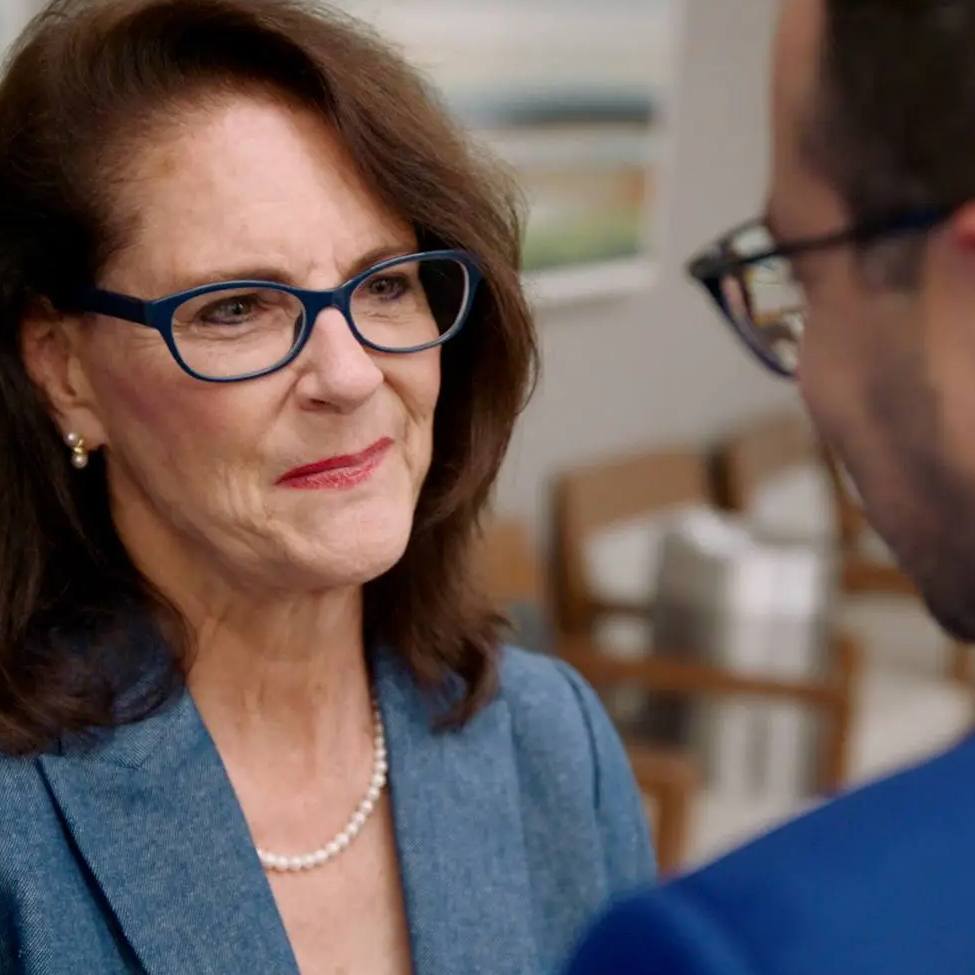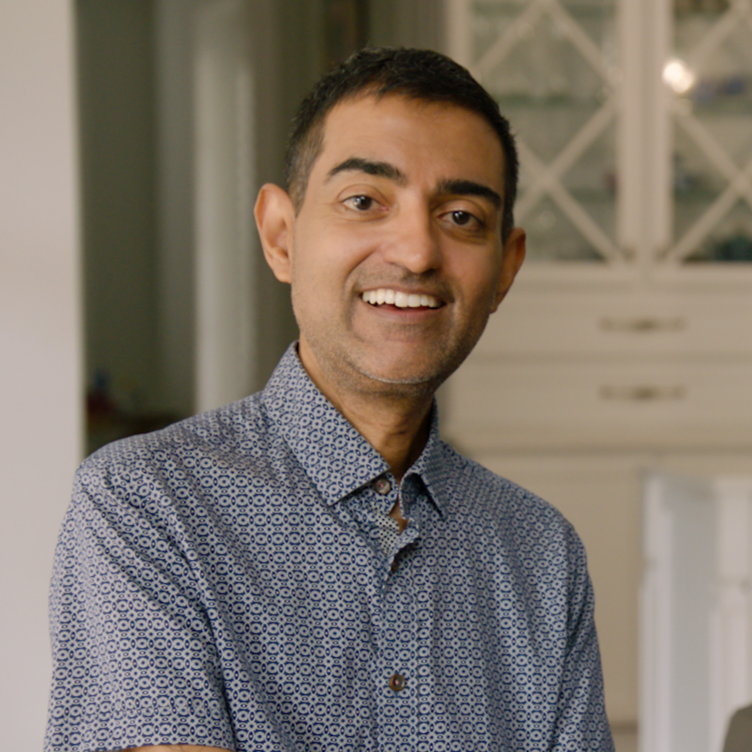-
Unique Treatment Option Cures Cushing Syndrome for Jessie Brown
 Retired elementary school teacher Jessie Brown takes time to enjoy the pleasures of daily life. She goes for long walks with her dogs, King Solomon and Baby Ruth. She spends time with her children and grandchildren who live near the farm where she and her husband, Tom, make their home in rural Marshall, Arkansas. She plans the holiday meals she’ll be making for her family, who are particularly looking forward to her much-loved turkey dressing at Thanksgiving.
Retired elementary school teacher Jessie Brown takes time to enjoy the pleasures of daily life. She goes for long walks with her dogs, King Solomon and Baby Ruth. She spends time with her children and grandchildren who live near the farm where she and her husband, Tom, make their home in rural Marshall, Arkansas. She plans the holiday meals she’ll be making for her family, who are particularly looking forward to her much-loved turkey dressing at Thanksgiving.
This year, these ordinary enjoyments are especially meaningful, because for the last two years, Jessie couldn’t do any of them. Confined to bed much of that time with a constellation of mysterious symptoms that left her immobile and in pain, Jessie wasn’t sure she would ever be able to reclaim the busy, happy life she loved.
“My face was swollen; my legs were swollen. I kept falling down. My hair and nails were breaking off,” she says. “I had a lot of bad symptoms. I knew something was wrong. I went to doctor after doctor, but they all had a different opinion.”
After almost a year and a half, Jessie was diagnosed with Cushing syndrome. But she wasn’t eager to move forward with treatment. Her local doctors recommended removing her adrenal glands.
She and Tom decided to get a second opinion. They traveled to Mayo Clinic’s Rochester campus, where a team of physicians confirmed the diagnosis, found the source of the problem, and came up with a novel treatment approach that spared Jessie’s adrenal glands and eliminated her symptoms. It was exactly the outcome she and her family had hoped and prayed for.
“It was like a miracle was happening in my life, and I do believe it was a miracle,” says Jessie.
A puzzling decline
Jessie was 67 years old when she began to feel ill, back in 2014. At first, as she experienced significant balance problems. She thought it might be the result of a chronic back condition she’d had for years. Then other symptoms began to appear.
She noticed swelling in her face, legs and abdomen. Over time, purple blotches began appearing on her skin. Fluid would weep from her swollen legs. Excess hair grew on her face. She sometimes had trouble holding her neck upright, and she developed diabetes. On top of all her physical concerns, her personality also seemed to change.
“She’s usually a pleasant person,” says her daughter Teresa. “When she got sick, she was aggressive. Any kind of suggestion would send her to the moon … She was not my mother, at all.”
“I had a lot of bad symptoms. I knew something was wrong. I went to doctor after doctor, but they all had a different opinion.” – Jessie Brown
In an effort to uncover the source of her symptoms, Jessie visited cardiologists, neurologists and back specialists. She went through a battery of tests, but the results didn’t point to a clear diagnosis.
After months of appointments with no answers in sight, Jessie’s daughter Julie decided to do some investigation on her own. She carefully researched her mother’s symptoms to see if she could find a condition that might cause all of them. The only possibility she found was something none of the doctors had suggested yet: Cushing syndrome.
An unattractive solution
Cushing syndrome happens when a person’s body has too much of the hormone cortisol. It can be caused by taking cortisone-like medication in high dosages for a long time. It also can develop when the body makes too much cortisol due to adrenal gland disease, a tumor in the pituitary gland or, rarely, a tumor in another part of the body that releases a hormone called adrenocorticotropic hormone, or ACTH, which controls cortisol production.
With this information in hand, Jessie made an appointment to see an endocrinologist in Little Rock, Arkansas. Her tests found significantly elevated levels of cortisol, and she was diagnosed with Cushing syndrome. Because Jessie didn’t take any medication that might be causing the disease, and no tumor could be located, her care team recommended that her adrenal glands be removed with a surgical procedure called an adrenalectomy.
The adrenal glands are responsible for making cortisol, as well as aldosterone, another essential hormone. Taking the adrenal glands out would require lifelong hormone therapy. Jessie and Tom weren’t sold on the idea.
“We decided we wanted to go to Mayo Clinic before we did anything,” says Jessie. “We hadn’t been there before. But we had some people we knew at home who had been, and they told us what a good place it was.”
A deeper investigation
When they arrived in Rochester, Minnesota, Jessie went through another round of tests. Her Mayo Clinic care team, including Irina Bancos, M.D. and Jad Sfeir, M.D., in the Department of Endocrinology, agreed Jessie’s symptoms were due to a severe case of Cushing syndrome, but they wanted to investigate further into the possible cause.
“I appreciate everyone at Mayo Clinic. After being shuffled around from doctor to doctor, being there felt so comfortable. It gave me some hope that everything was going to be okay...” – Jessie Brown
Detailed imaging exams, including several CT scans of her head, chest and abdomen, revealed a tiny tumor deep in Jessie’s left lung that appeared to be making ACTH. Dr. Bancos suspected it was the culprit. When Cushing’s syndrome is caused by an ACTH-producing tumor, those tumors are typically very small and tend to develop in the lungs, pancreas, thyroid gland or thymus gland.
At first, finding the tumor seemed like small consolation. Surgery to remove it would be extensive and include removal of the lower lobe of Jessie’s lung. That option posed more health risks than taking out Jessie’s adrenal glands, so the team initially thought the glands may still need to be removed.
A team approach brings success
Before moving forward, however, Dr. Bancos consulted with K. Robert Shen, M.D., a Mayo Clinic thoracic surgeon, to see if there might be an alternative. Dr. Shen reviewed Jessie’s case and had an idea. He wanted another expert to confirm that it could work, though, so he invited Patrick Eiken, M.D. from the Department of Radiology to join the discussion.
Between the three physicians, they agreed Dr. Shen’s idea of using a procedure known as cryoablation could potentially solve the problem. Although it’s not typically used to treat tumors related to Cushing syndrome, cryoablation is often an effective approach for eliminating other kinds of small lung tumors. In consultation with Jessie and her family, the team decided it was worth a try.
During the procedure, special needles were inserted through Jessie’s chest to the spot within her lung where the tumor was located. Passing compressed gas through the needles created a zone of extreme cold, freezing the surrounding tissue and destroying the tumor without harming the rest of the lung.
“If you can’t get help at home, come to Mayo Clinic. It stands alone. I recommend it. This is the place to be.” – Tom Brown
By the morning after her procedure, Jessie’s level of cortisol had dropped dramatically. Since then, her symptoms have gradually disappeared. She’s been able to return home and restart her active lifestyle. At a checkup three months after the procedure, Mayo Clinic doctors confirmed her Cushing syndrome is gone, and Jessie doesn’t require any additional follow-up care.
“Life changed dramatically when I got sick. It was an awful nightmare,” Jessie recalls. “Now I feel so much better. I’m certainly happy to be on the road to recovery. I appreciate everyone at Mayo Clinic. After being shuffled around from doctor to doctor, being there felt so comfortable. It gave me some hope that everything was going to be okay, or at least they were going to work on it for me until they figured it out.”
Her daughter Teresa adds, “We feel the Lord puts certain people in your path. We believe he put the people we met at Mayo Clinic, the doctors and everyone else, there for a reason with their special calling and gifts. We thank God for them.”
Tom would endorse that statement. “If you can’t get help at home, come to Mayo Clinic,” he says. “It stands alone. I recommend it. This is the place to be.”
HELPFUL LINKS
- Learn more about Cushing syndrome.
- Read about the Department of Endocrinology at Mayo Clinic.
- Explore Mayo Clinic’s Rochester campus.
- Request an appointment.







